Abstract
Volatile sulfur compounds are known to be produced during the preparation of compost used as a substrate in mushroom cultivation. Because they cause odor problems, attempts have been made to reduce the production of these compounds. The influences of temperature and various additions on the production of volatile sulfur compounds from composting material were tested on laboratory-scale preparations. The production of H2S, COS, CH3SH, and (CH3)2S was proven to be a biological process with an optimal temperature that coincides with the optimal temperature for biological activity. The formation of CS2 and (CH3)2S2 was shown to be a nonbiological process. The emission of volatile sulfur compounds during the indoor preparation of mushroom compost appeared to be remarkably reduced (about 90%) as compared with the emission during the conventional outdoor process. Introduction of this indoor composting process would result in a significant reduction in environmental pollution.
Full text
PDF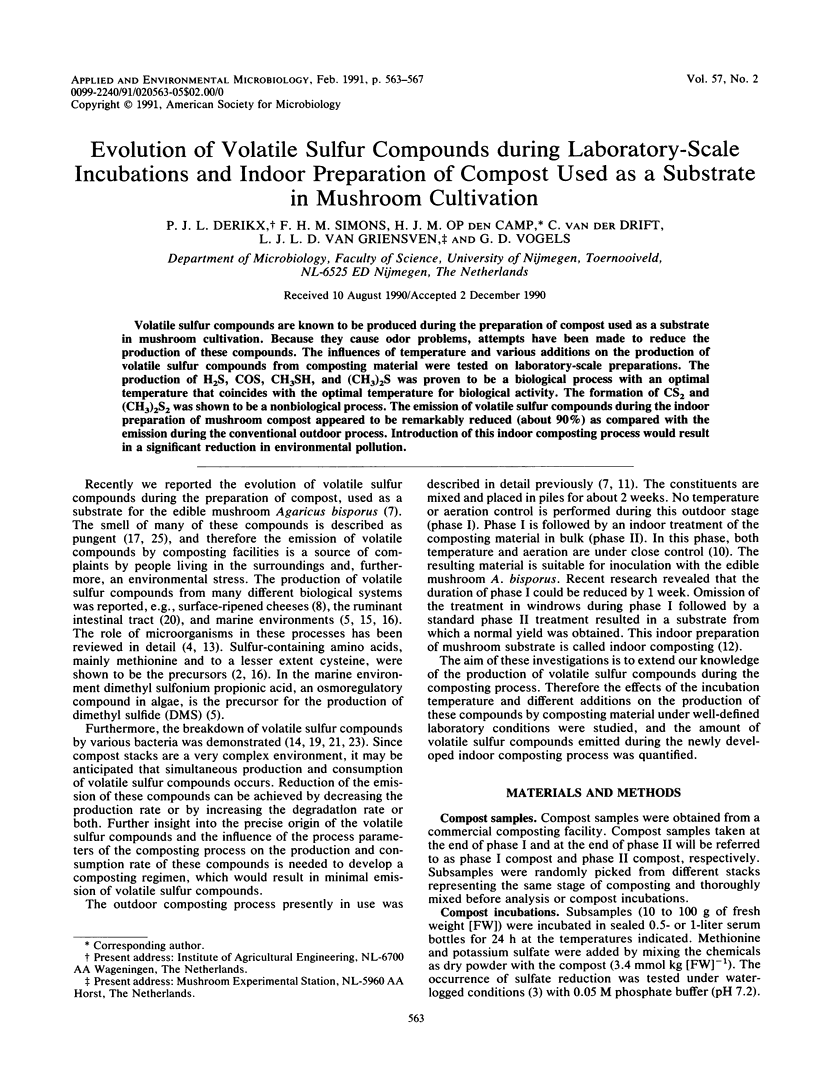
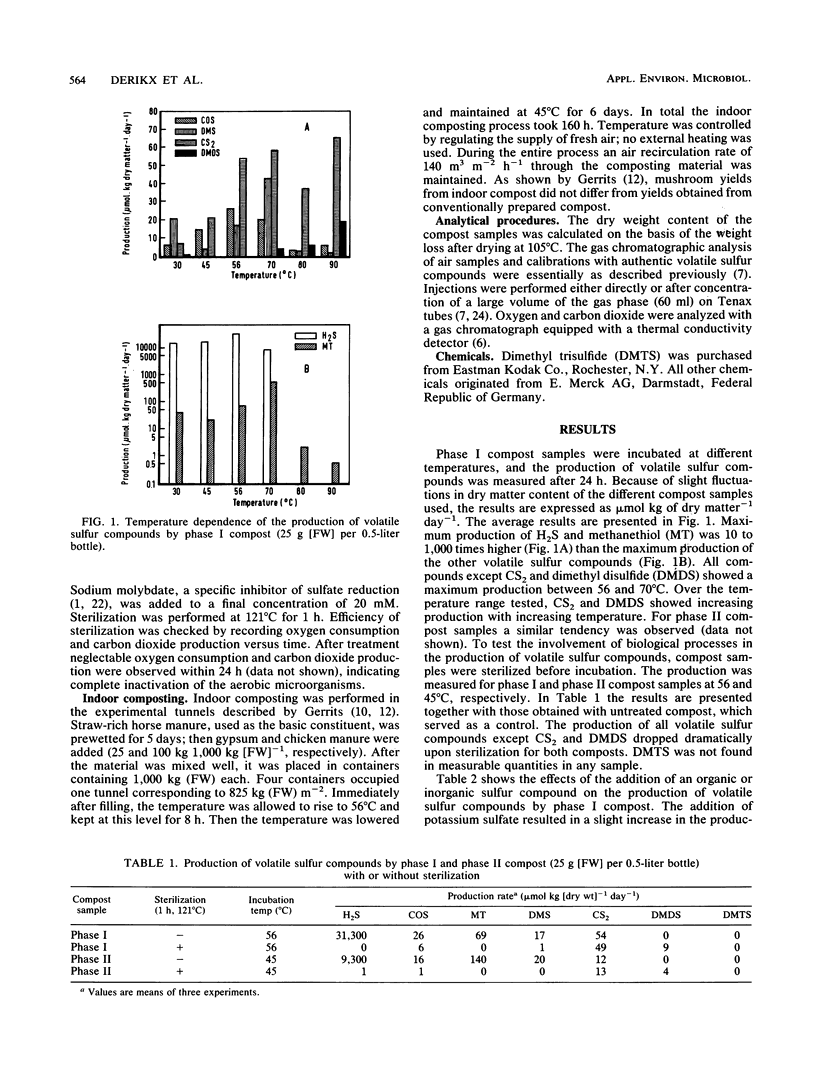
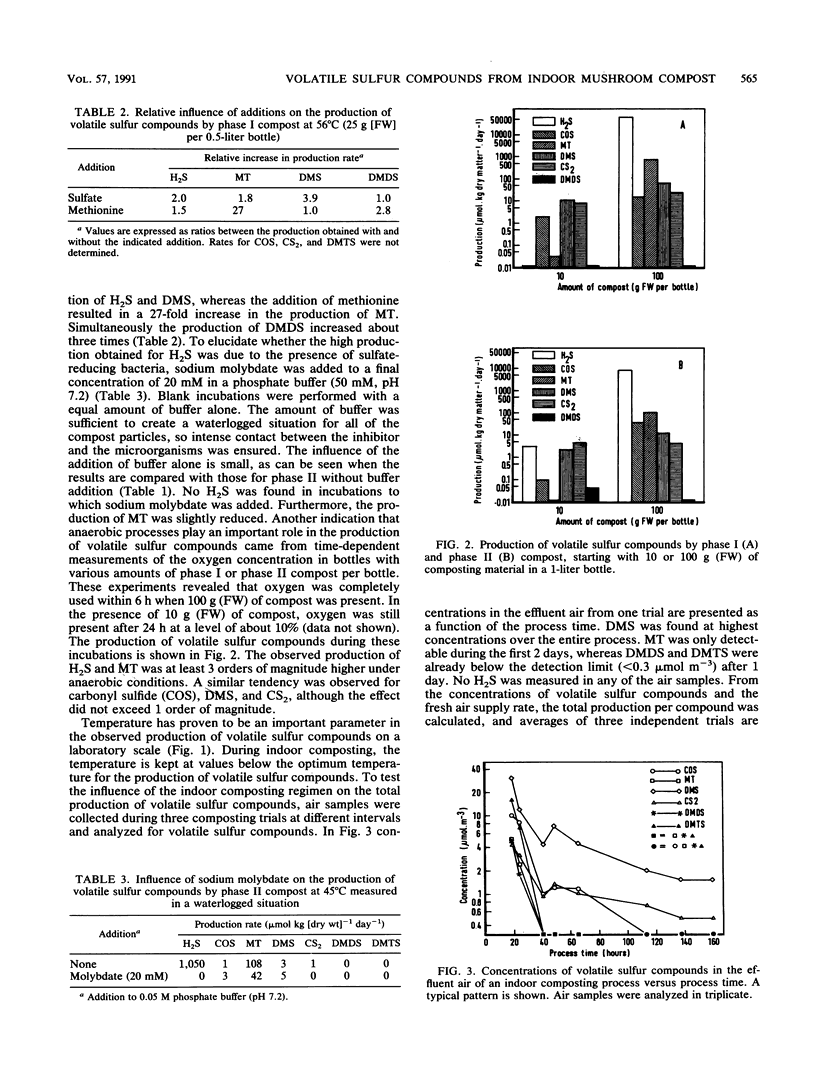
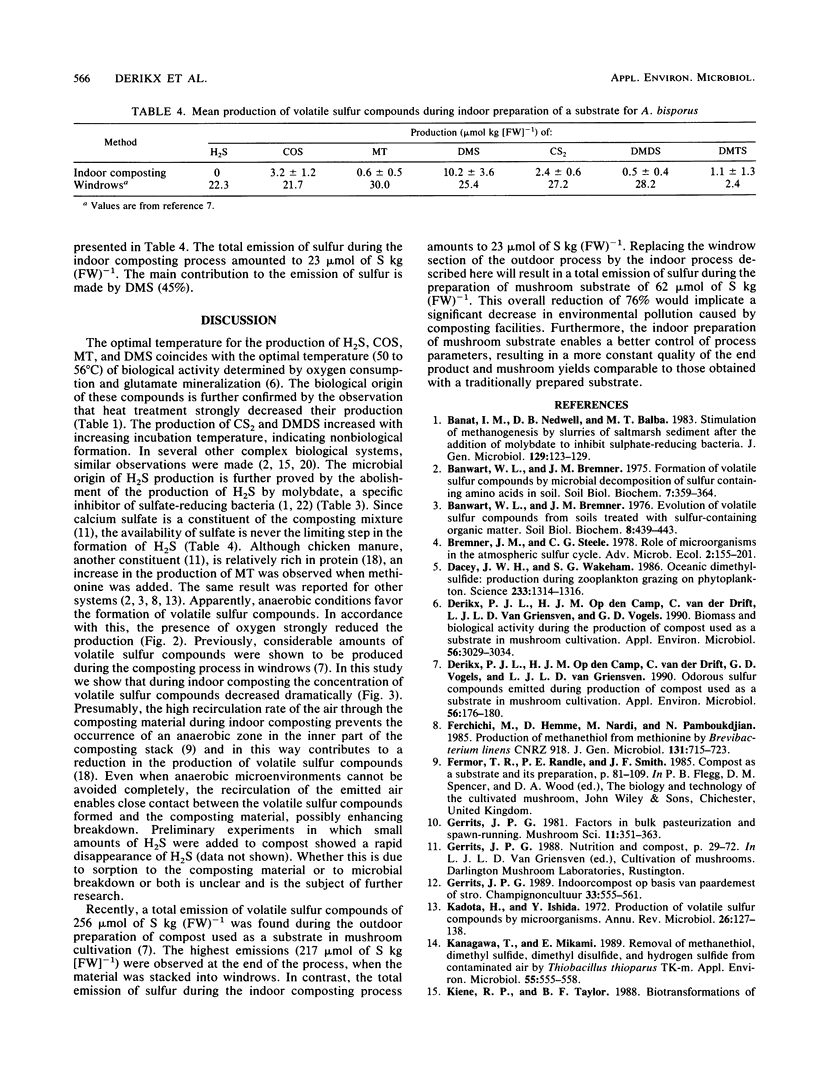
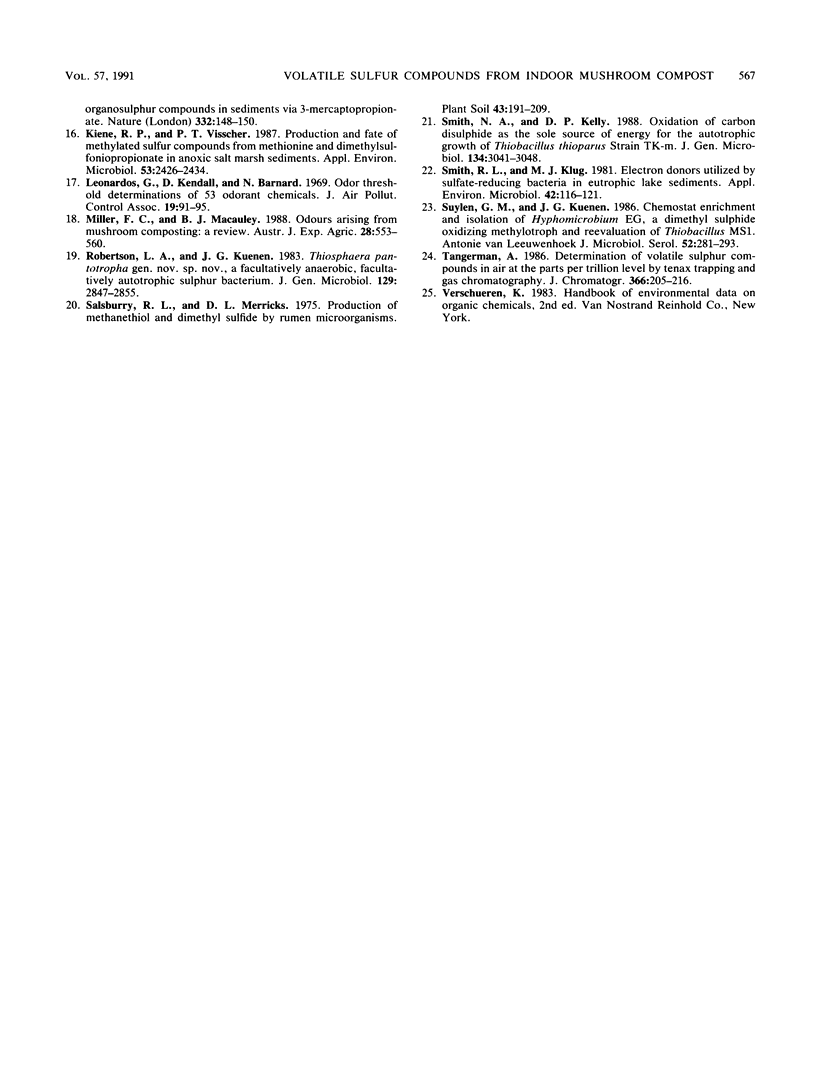
Selected References
These references are in PubMed. This may not be the complete list of references from this article.
- Dacey J. W., Wakeham S. G. Oceanic dimethylsulfide: production during zooplankton grazing on phytoplankton. Science. 1986 Sep 19;233(4770):1314–1316. doi: 10.1126/science.233.4770.1314. [DOI] [PubMed] [Google Scholar]
- Derikx P. J., Op Den Camp H. J., van der Drift C., Van Griensven L. J., Vogels G. D. Biomass and Biological Activity during the Production of Compost Used as a Substrate in Mushroom Cultivation. Appl Environ Microbiol. 1990 Oct;56(10):3029–3034. doi: 10.1128/aem.56.10.3029-3034.1990. [DOI] [PMC free article] [PubMed] [Google Scholar]
- Derikx P. J., Op Den Camp H. J., van der Drift C., van Griensven L. J., Vogels G. D. Odorous Sulfur Compounds Emitted during Production of Compost Used as a Substrate in Mushroom Cultivation. Appl Environ Microbiol. 1990 Jan;56(1):176–180. doi: 10.1128/aem.56.1.176-180.1990. [DOI] [PMC free article] [PubMed] [Google Scholar]
- Ferchichi M., Hemme D., Nardi M., Pamboukdjian N. Production of methanethiol from methionine by Brevibacterium linens CNRZ 918. J Gen Microbiol. 1985 Apr;131(4):715–723. doi: 10.1099/00221287-131-4-715. [DOI] [PubMed] [Google Scholar]
- Kadota H., Ishida Y. Production of volatile sulfur compounds by microorganisms. Annu Rev Microbiol. 1972;26:127–138. doi: 10.1146/annurev.mi.26.100172.001015. [DOI] [PubMed] [Google Scholar]
- Kanagawa T., Mikami E. Removal of methanethiol, dimethyl sulfide, dimethyl disulfide, and hydrogen sulfide from contaminated air by Thiobacillus thioparus TK-m. Appl Environ Microbiol. 1989 Mar;55(3):555–558. doi: 10.1128/aem.55.3.555-558.1989. [DOI] [PMC free article] [PubMed] [Google Scholar]
- Kiene R. P., Visscher P. T. Production and fate of methylated sulfur compounds from methionine and dimethylsulfoniopropionate in anoxic salt marsh sediments. Appl Environ Microbiol. 1987 Oct;53(10):2426–2434. doi: 10.1128/aem.53.10.2426-2434.1987. [DOI] [PMC free article] [PubMed] [Google Scholar]
- Smith R. L., Klug M. J. Electron donors utilized by sulfate-reducing bacteria in eutrophic lake sediments. Appl Environ Microbiol. 1981 Jul;42(1):116–121. doi: 10.1128/aem.42.1.116-121.1981. [DOI] [PMC free article] [PubMed] [Google Scholar]
- Suylen G. M., Kuenen J. G. Chemostat enrichment and isolation of Hyphomicrobium EG. A dimethyl-sulphide oxidizing methylotroph and reevaluation of Thiobacillus MS1. Antonie Van Leeuwenhoek. 1986;52(4):281–293. doi: 10.1007/BF00428640. [DOI] [PubMed] [Google Scholar]
- Tangerman A. Determination of volatile sulphur compounds in air at the parts per trillion level by Tenax trapping and gas chromatography. J Chromatogr. 1986 Sep 24;366:205–216. doi: 10.1016/s0021-9673(01)93468-5. [DOI] [PubMed] [Google Scholar]


